7 more old tools almost no one uses anymore
The evolution of the automobile has been non-stop from the moment Karl Benz first threw the flywheel ’round on his Patent Motorwagen. The technology, process, and tools needed to keep cars running have evolved from the adjustable spanners and flat head screwdrivers to complex, hyper-specific specialized tools that spend more time laying in toolbox drawers than being used. Some old tools have stood the test of time while others have faded from common use.
We are tool hoarders ourselves, and objects designed for utility that are still functional will always have a place in our box but it is interesting to look into the corners of the toolbox and see what tools are getting less and less use over the years. Whether due to an improved design usurping the use of an older tool, or the task a specialty tool was design for becoming less popular due to car construction and use changing, tools evolve as quickly—if not more—than the car itself. Here are seven examples of tools that are no longer the toolbox staples they once were—for better or worse.
Bumper jacks
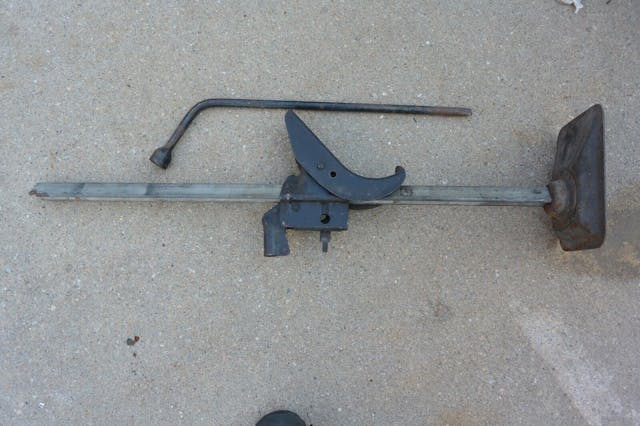
In a world of bumper covers, the thought of attaching a lifting mechanism to the exterior of your car and using it to lift the vehicle is some type of strange fever dream. It wasn’t always that way though. Flat tires have been around longer than the automobile and the need to pick up the car followed right along. Bumper jacks are good in concept but the lack of any safety catch or stabilization to keep from tipping over makes them treacherous to use. They still have utility in off-road situations but that can also make use even more dangerous.
Verdict: Keep as a reminder of how far we’ve come.
Brake pliers
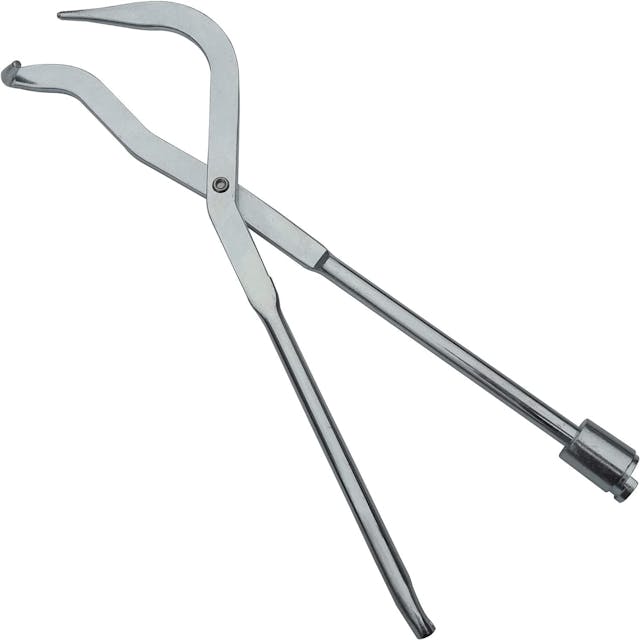
Somehow in the history of cars, there have been just two types of brakes commonly found behind the wheels: Drum or disc. Drum brakes can provide all the stopping power needed while also wearing like iron thanks to the enclosed and thus relatively debris-free nature of the design. That same design also has a handful of tension springs stretched carefully over small studs that can be serviced with groove-joint pliers and a screwdriver, but there are also brake pliers that rose and slipped from popularity right alongside drum brakes.
With modern materials and the relatively limited use of drum-brake cars, servicing drums has gotten less common to the point that while special tools can make the job easier it is only marginal and certainly not required.
Verdict: Keep them if you’ve got them but can likely pass if building your toolkit.
Growler
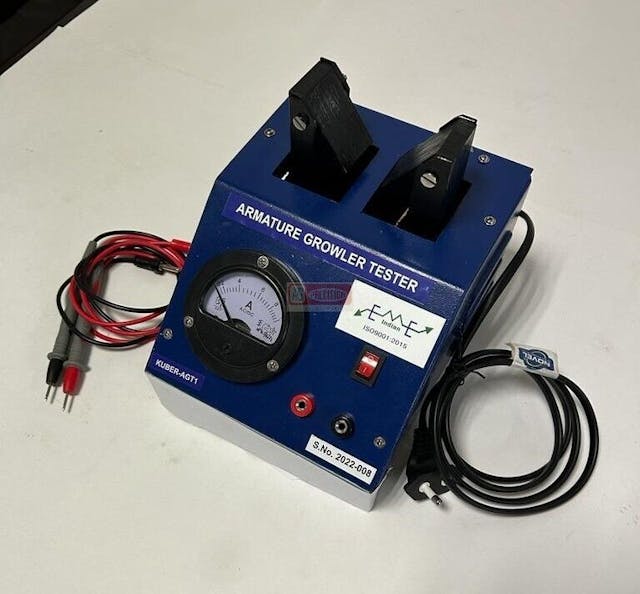
We aren’t talking about that curmudgeon of a mechanic who seems to only communicate in grunts and growls as the ratchet clicks to remove parts. No, the growler here is used to test the windings of a motor or generator. The armature is placed on a bed that flows alternating current into the windings. Using a ferrous rod to locate the magnetic field that will be created by a short makes for easy diagnostics. The price drop that came with the mass production and parts sharing between various models relegated these to hobby benches or the back room of specialist shops. Since rebuilding motors or alternators has become rare, these are practically a novelty.
Verdict: Keep if you’ve got the space, but often these find problems that are difficult to source parts to fix.
Vernier caliper

The increase in affordable precision has been quiet but amazing for at-home DIY projects. Good precision measuring devices used to be limited to the hands of skilled technicians and specialists in machine and fabrication shops. It took skill and training to properly use and read items like the vernier scale on calipers used in fabrication and precision machine work. Then digital calipers entered the market and the prices dropped year after year to the point that now a set of calipers accurate enough for most home use can be had for under $50.
Verdict: Use what you like and what works best for you. Regardless of what that is, be sure to keep any and all precision tools stored carefully to prevent damage.
Timing light
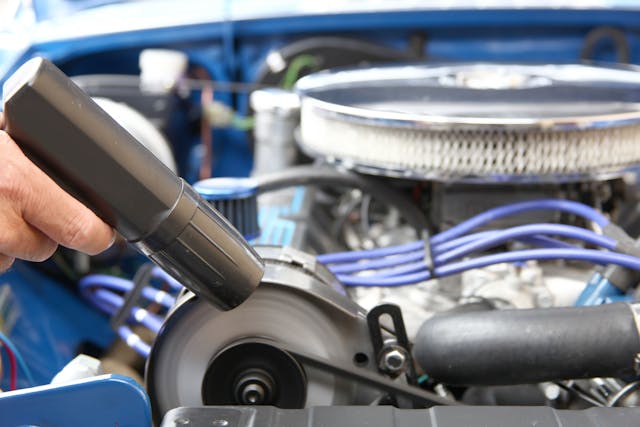
When we first wrote about tools that were fading from popularity last year, the comments section lit up with the suggestion that timing lights were left out. It’s been decades since a car rolling off the assembly line featured a tunable distributor, as the ignition is often now controlled by a computer working off data provided by a crankshaft or camshaft position sensor (or both) to control the firing of individual coils for each spark plug and cylinder. Adjusting the timing of the spark in the cylinder is changed with a laptop rather than a wrench and strobe light. Timing lights have been relegated to specialist shops and DIY garages.
Verdict: Keep it if it works, but consider a modern digital light if building a vintage-focused toolset as the features and capability have come a long way since the strobes of old.
Point file
Another from the ignition side of things. Even before computerized ignition was the advent of electronic or non-points-based discharge. Long gone are the days of having to swap a set of points on the side of the road or scratch off the char of the small faces to allow the coil to charge. A points file was handy for if or when a condenser would fail or the points would otherwise get crummy enough to not allow enough current through.
Verdict: If one is already in your glovebox, keep it for nostalgia’s sake and just in case. You never know who it might help.
Brake lathe or shoe arcing machine
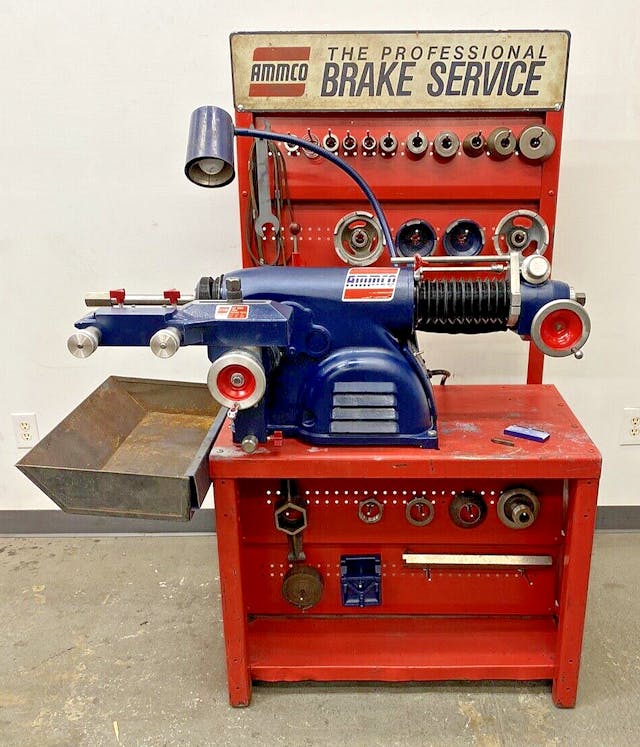
Drum brakes often have more swept area compared to disc brakes, but that additional friction material is useless if it is not in contact with the brake surface. The heat retention characteristics of drums can sometimes lead to warping that would previously be cleaned up by “turning” the drums to create a nice concentric surface around the shoes. While drums can still be found on modern cars the drums are often cast so thin that turning them is no longer an option and instead we must skip straight to replacement.
Shoe arcing machines do the same thing as brake lathes but set the radius of the friction material to match that of the drum. It’s critical for good brake performance on some vintage cars but has faded from popularity significantly due to the health concerns of grinding friction materials—especially asbestos.
Verdict: Save if you’ve got the space, or sell to a vintage shop if you don’t. We likely won’t see new versions of these tools made and they so help keep our cars safely going down the road.
***
Check out the Hagerty Media homepage so you don’t miss a single story, or better yet, bookmark it. To get our best stories delivered right to your inbox, subscribe to our newsletters.
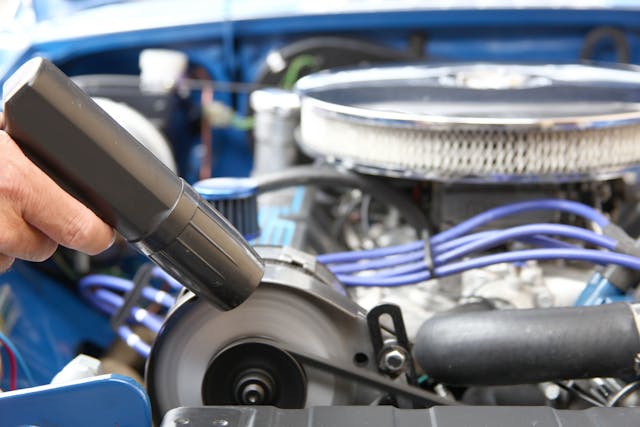
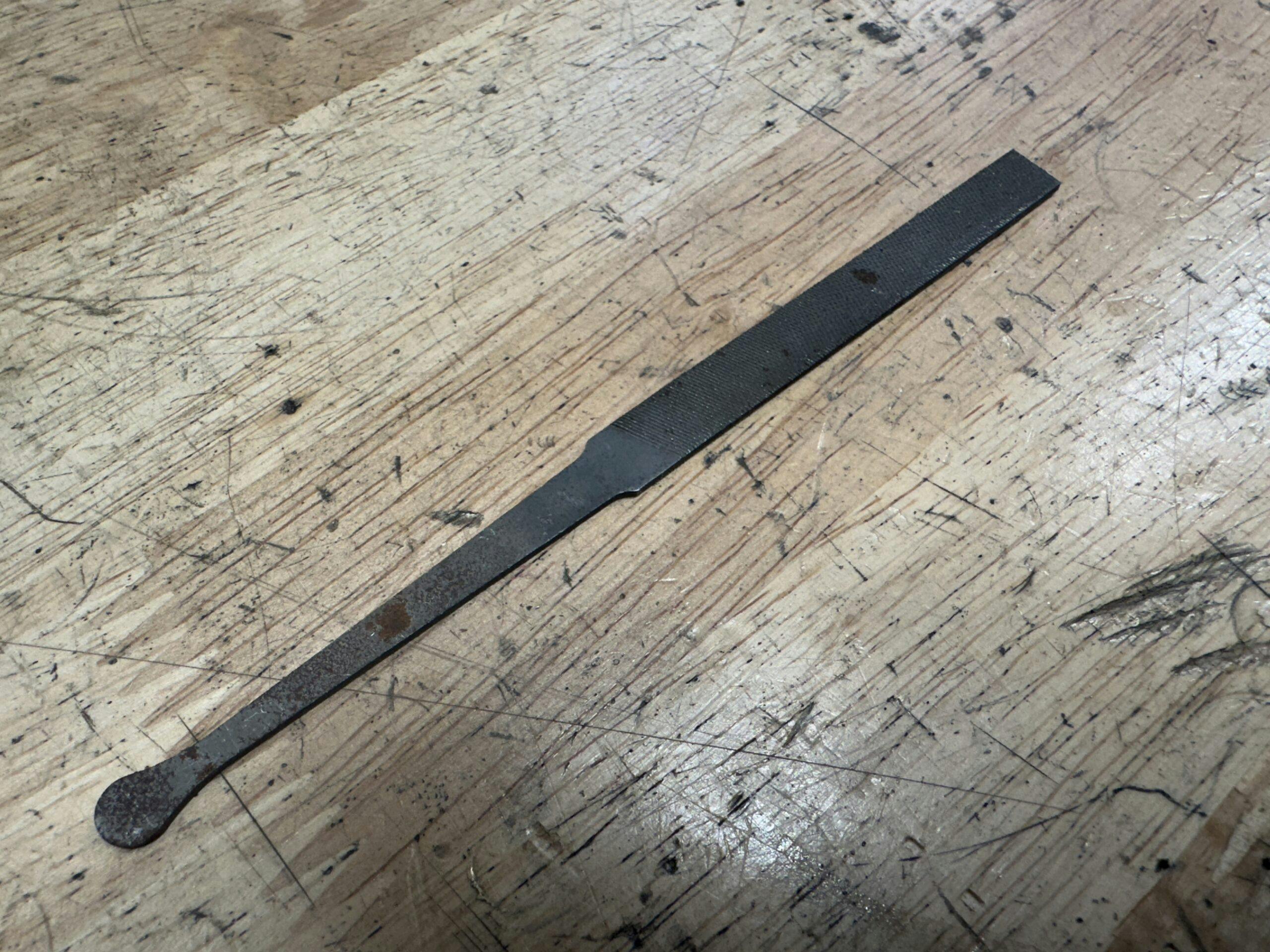
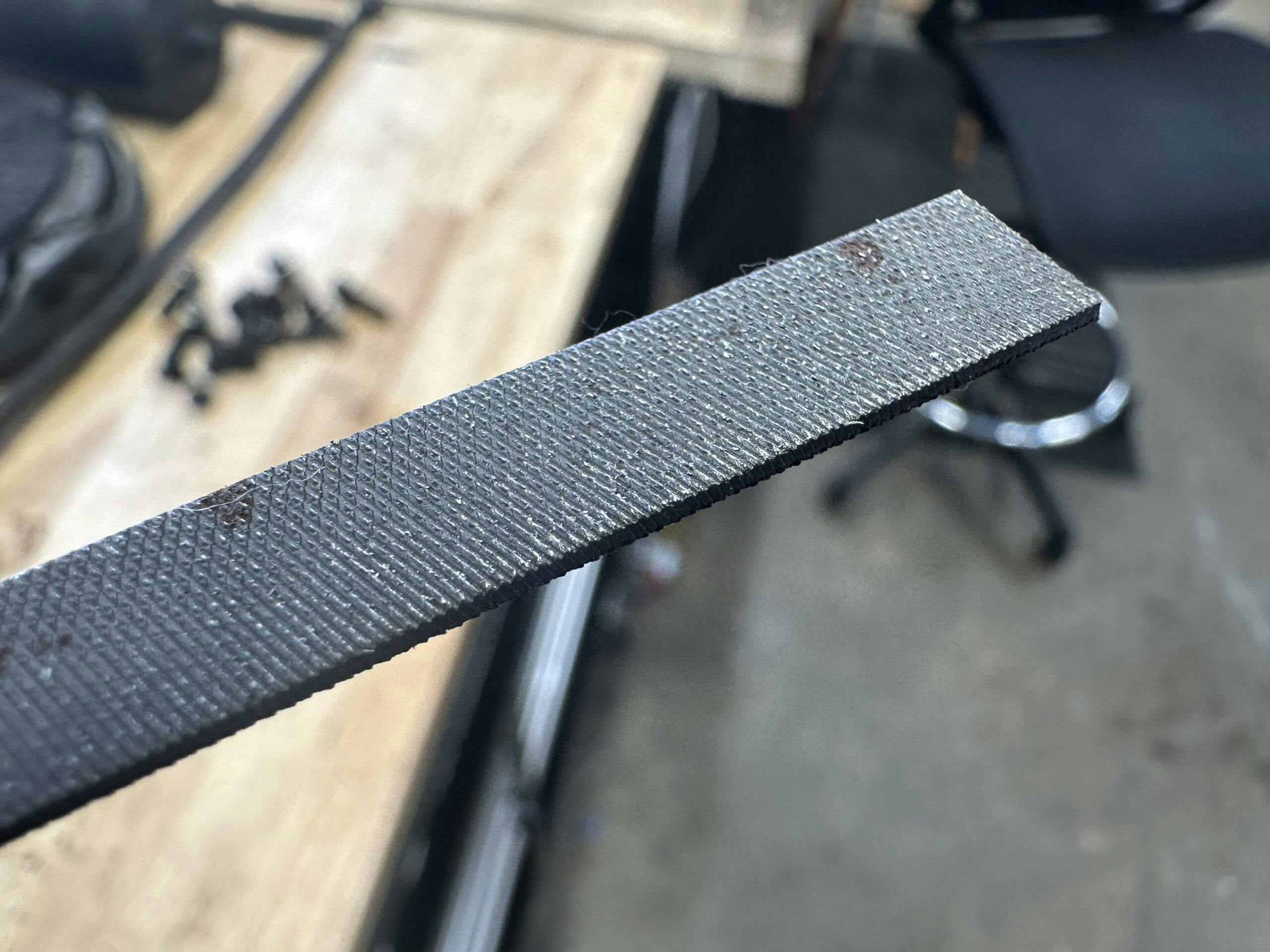


My points file still gets a lot of use. It’s called an emery board and the wife uses it to spiff up her nails.
Emory board leaves some grit residue that is non conductive, a points file doesn’t.
Tim, Pretty sure his wife uses his points file for her nails. Not the other way around.
😆Right.
Match book scratcher is good, too, but who has matches these days?
My Dad’s sense of humor: “I guess I’m rich! I’ve got matches to burn!” (-:
I used a point file two months ago on a Ferguson backhoe. Would’nt start, but a couple swipes with the points file and it fired right up.
More should be using calipers.
When I worked in a metals company everyone referred to these simply as Verniers. Even when they got dial calipers, still called them simply Verniers.
I only stopped using my Vernier calipers when I got farsighted. Used the same pair for decades, could read them to .001″ precision. Set I have was made in Poland in the 80s. Also have some very nice Chinese made carbide faced micrometers (invented by Palmer, they use a Vernier scale wrapped around a cylinder) from the 80s although a set of Mitutoyos up to 12″ was had in recent years for pennies on the dollar .
right there with you
Any caliper is good to only .001 when properly calibrated. Always found it interesting when people reported results more accurately. I found one of our shop group leaders ‘adjusting’ calipers when they came back from our periodic calibration, because he ‘didn’t like the way they did it.’
Ha! Always some genius who will ‘curl’ the metal end of a tape measure “so it stays attached better”….. I call that serious stupidity
Absolutely, would not be without them, many, many uses.
I use my calipers several times a week with my car and RC hobbies. I prefer the traditional non digital capliers as they dont need batteries. Most of what I do is in metric measurements.
In addition to having no need for batteries, a vernier caliper is inherently more stable (maybe even more precise) over time. They only have one moving part and there is no chance for gear driven backlash. They stay precise over time even when subjected to vibrations from a tool box drawer. I have to use a magnifing lense with mine now!
Spot on Stephen, especially with the magnifier at this point. The one required these days in my welding helmet works just fine with the verniers!
I would argue the main reason moving from bumper jacks is more due a move from solid bumpers rather than some imagined safety concern. All of my modern cars came with scissor jacks that slip just as easily as a bumper jack but that bend as they fall over making them useless, or they are trapped under the car and not usable. My wife’s Mercedes came with a trailer tongue type jack that not only slid out of the lift point but severly bent as it tipped over. And I shouldn’t even mention the MANY cars that do not even come with a jack or spare tire in an effort to save the manufacturer money.
And with a bumper style jack (offroad or farm jack as most commonly used nowadays), due to the lenght of the jack, you had some warning as the car tipped over so you could move out of the way. It takes a lot less time for a scissor jack to slip off a lift pad than it does for a bumper jack to tip over.
My Ford bumper jack works fine on the front, but I call a tow truck on the road for the rear, spring travel being huge on the 1960 Tbird. t home, I use my hydraulic floor jack with a 6×6 wood block under the rear bumper, lifting both wheels. Scissor jacks have too little rse for the size of the base for car lifting.
I still have a crank type bumper jack I use to pull fenceposts out of the ground. My first cars all had bumper jacks, quite dangerous to use, but that was all we had. My ’73 pickup has a crank type frame jack. I have used it many times over the years if out in the wilds.
I use my jack to pull fence posts and t-posts out of the ground. Works great most of the time!!!!
I thought I was the only person who kept an old Bumper Jack with all my Fencing tools. I mounted mine on a 1 ft. piece of 2″x6″ board so it doesn’t sink into soft Ground.
Before they were red and black, they were just farm jacks and painted whatever color my uncle had available. Every farmer had a couple. I moved to AZ and people were paying big money for a name-brand to hang off their Jeep. Kind of funny.
They work so much better for pulling fence posts than a bumper jack.
The hydro post driver is way better than the impact collar as well.
I learned about this trick when I was asks to replace an existing fence. I used the bumper jack from my ’71 Olds to pull them out – worked great.
Without a jack I have done this many times to yank out a post. I use a 4 x 4 about 16 ” set on end next to the post. Then I wrap a rope around the post like a tourniquet. Put a long bar or strong pipe through the rope and use the 4 by as the pivot on the ‘far’ side but near to the post. With a reasonable lenght pipe/bar it almost always works.
I had a flat on my Mercedes 1968 350SL once. The hole for the jack to slide into the body was rusted out and unusable, I resorted to using the jack like a bumper jake with the rod of the jack under the bumper. Talk about safety I was just lucky to get the tire replaced without accident.
Short of giving away my age , back when i was about 19 I put the bumper jack on my 78 gmc It needed some brake work in the back , low and behold as I grabbed the wheel with my arm around it to remove it , the stupid jack went down , I really should say stupid me for having leaving the truck on a slite angle , we tend to learn lessons the hard way , anyway my arm was stuck between the wheel and the wheel well and starting to go numb , lucky enough my buddy came around for a visit and helped me out of situation. So today ask if I remember bumper jacks , do I ever.
Good story.
Good decisions come from experience. Experience comes from making bad decisions.
-Mark Twain
the 350SL was not made in 1968 would have to be a 280SL. 350SL came out in 1972.
I used bumper jacks back in the day when bumpers had slots for them. Now I have a stash of scissor jacks in my garage. I use them for everything. Try to install a transfer case or transaxle using a floor jack and you will see the charm of a scissor jack very quickly
I still use a timing light. I don’t use a point file because I never did… there is usually an errant scrap of sandpaper around to do the task. Brake pliers – still use, but only half of two of my vehicles have drum brakes.
Well I think when they changed to slots to “secure” bumper jacks is when they became more problematic. I’ve seen dozens of them where the little “tab” that inserts into the slot is all bent and also slots that’re deformed and ripped wide – signs that the danged things couldn’t hold up with a little bit of tipping. When I learned to jack up a vehicle, the bumper jack had much more “grip” via a lip that was sometimes 2″+ wide and often form fitting to the profile of the bumper – much more secure and less prone to falling (at least on level, firm ground). There isn’t really a jack made that is absolutely safe when on a slope or soft stuff.
I had a Muncie 20 and a bellhousing cradled on my floor jack. It took a little finesse to maneuver, but it got the job done.
Back in those days, I used to be able to man handle 4 speeds lying on my back. Wouldn’t even think of it these days.
Once me and the son of a famous Long Island NY race car driver removed the auto. trans from the Dad’s 1960 full size Merc while laying on our backs – we were too proud to tell the old man we couldn’t do it!
ha ha. I bought a nice 70 Charger R/T S/E car in 76. Got a flat tire. Went to use the bumper jack and base plate did not fit the upright. So I went and bought the correct baseplate. A couple of years later and I got another Flat. I patted my self on the back thinking what a rocket scientist I was by thinking ahead and getting that base plate. Well, I put the base plate on the ground, put the upright in it, grabbed the “bumper hook part” and guess what. It was WRONG also. After a tow truck lifted the car and put my spare on for me. I went to a J.C Penney store (remember those) automotive center and bought their 1-1/2 ton (now they call them 3 ton) Hydraulic Floor Jack that weighed 90 pounds. I never got another flat!! But I got my moneys worth of use out of that floor jack.
I never used a points file either. I’ve used 220 grit flexstone for 55 years.
Dwell meter.
That’s Right! How about a tie rod adjustment tool? Those don’t get much.
My tie-rod adjuster is called a “pipe wrench.”
Exactly what I was missing in this article, and if not available feeler gauges, I think they are called in your language, those thin metalblades in different sizes, also necessarry for setting valve clearence.
And for setting points. After you file them
I came across my spark plug gap gauge the other day. Since going electric, it’s just a memory I don’t need to dredge up. Same with my timing light and oil filter wrench..
I still check the gap on new plugs. Always seem to be right
V58-0003SERVKT
That’s the SKU for Tesla gear box service kit.
Might want to look it up before tossing that oil filter wrench.
Maybe not in the ‘not used’ category, but if we count less used……….English/American wrench sizes. Unless you got something that was born before probably a lot of today’s readers.
British Whitworth wrenches/bolting. I kind of remember having to deal with this as a young man while taking two BSA 650 motorcycle basket cases to make one running bike. Had magneto ignition and manual advance lever as I recall.
You forgot the dwell meter!
Although I still use mine, and my timing light, on the old points/distributor car.
I must be vintage myself. I either have or have had all of these except the point file, plus of course a dwell meter. Terrible thing is I can still set points with a matchbook cover (If I can find one of those)and the dwell by observing the pattern on the distributor cam. Timing by ear and a short road test. Not perfect, but the older stuff this works on are far from perfect as well. Disclaimer: Never worked on any dual point distributors.
Paul, you good Sir, are awesome. It is an honor to have all this hard earned knowledge, but be careful, our age is showing.
Right with you Paul. I do have and still do use the tools described in this article, I guess it shows my age when I look at these tools and don’t even think of them as “old”. I enjoy cranking wrenches on my old Camaro and I feel much younger than I am when doing so.
I don’t know whether to laugh or cry! Those tools illustrated sure do bring back memories or earlier days “pulling wrenches”. In my apprenticeship in Scotland many years ago, as part of our training we had to make some of the tools as an exercise in use of files, drills, lathes, scrapers (remember those?) I still have some of those in my tool box, never used but lovingly cared for. I have a center finder, tap wrench, set of inside and outside calipers and a small vice for use on a drill press. Most were also proudly engraved with my name. I’m getting old and I am planning on giving away my ‘regular” tools to my younger relatives but I’ll never part with my hand made tools.
I have several platic shims, mostly old credit cards, I have marked up with thickness………020, 037, what ever. Once in a blue moon I use one to check something. Probably not too accurate but gets you in the ball park. Measure them with a digital caliper
Found mine while cleaning out a drawer a few days ago and was first puzzled by the sizes. They are now with the other MG service tools. I looked up pricing and got a shock, unlike digital calipers they seem to be getting pricier than I remember.
This is a very poor article to an audience of classic car owners. Learn your audience.
I wasn’t going to be so blunt…but had similar thoughts.
Me too. I wonder what is the average age or median age of the cars owned by Hagerty clients. I have more cars needing these old tools than I have newer stuff, so I’m keeping all my old tools which are becoming irreplaceable. I’ll pass them and the cars on to younger collectors soon enough.
Regarding wrenches, us old-timers had it sorted with Whitworth & SAE tools.
Then the Europeans & Asias came along and ruined everything with metric!
But, wouldn’t that be the very group that would have tools no longer needed? Anyone who never owned a car that needed them wouldn’t have bought them.
Exactly
77GL – Exactly. (Not Tim)
Couldn’t agree more. Does no one out there still rebuild engines? I still use almost all that stuff and most the stuff mentioned in the comments (aside from bumper jacks). Never trusted digital micrometers, etc.- give me the verniers any day.
My 55 Oldsmobile came with a bumper jack, I also still use a timing light, caliper, brake tool and the points file. Never used the growler or had the space for the brake lathe. Although my son’s shop has one still and he turns my drums when needed.
I also use older tools and also turn my own drums and rotors.
Yes I have a Bosch-Simpson made in London ON in the 60’s. Very useful for voltage regulator, Ohmmeter and dwell. I don’t need a computer to chase faults, but then my 55 Buick only has one computer…..me😂
Bach-Simpson, I recall. I’m from London and taught automotive electrical and fuel systems at the local college in the 70s. We used growlers, distributor machines, scopes, CO meters, armature lathes, and all the old school stuff. Lots of fun back then. Electronics basically took away all adjustments, making a lot of that stuff useless. Long retired now, I keep a good stock of old stuff to keep my 1275 Mini and BMW 2002 on the road.
I acquired a hydraulic two post bumper jack from the service station I worked at as a teen. They upgraded to pneumatic.
Mine still works on my 55 Buick and some other uses. Every 5 years I replace the “ leather”( yes that’s correct) seal in the cylinder. It ain’t like today’s throwaway.
I used a growler in the NAVY, to repair a flooded electric motor that was submerged when the snipes turned a valve to drain the bilges and directed the water to our missile magazine. There were two 60 HP motors that ran our hydraulics, and we were able to dry out one of them with the growler. The other one had to wait for the dock workers to switch it out.
I use my vernier caliper almost every day for all sorts of purposes. And I use a timing light regularly.
+1. And +1.
The jack is part of the classic car tool kit which should be retained with the car, great pride ( and expense) is given to showing an original tool kit, take a look at a old Bentley or Jaguar tool kit, a thing of beauty.
A Ferrari tool kit will set you back £££££
In the ’70’s I remember the local auto parts stores would cut drums and radius the brake shoes to match. Some of the better shops (3rd St. Auto Electric, Mamaroneck, NY, long gone now) used to also put a crown on the shoe’s profile for quick break in. Our customers were always happy with those parts in their cars.
Yeah, dwell meter. Every old car I have has been converted to electronic ignition. But I still use timing lights.
An Ignition Point File, recently my old Ford 302 would not fire up. I un packaged a new/old stock IPF and went to work on thoes points. it’s the only way to achieve two parallel surfaces. that’s the functionality of the parallel file. that 302 fired right up.
Another tool is tappet wrenches. These wrenches are thin enough so you cold stack one on the other to adjust the length of the pushrod – used in the pre-adjustable rocker arm days.
I use my vernier gauge and timing light a lot at the moment.